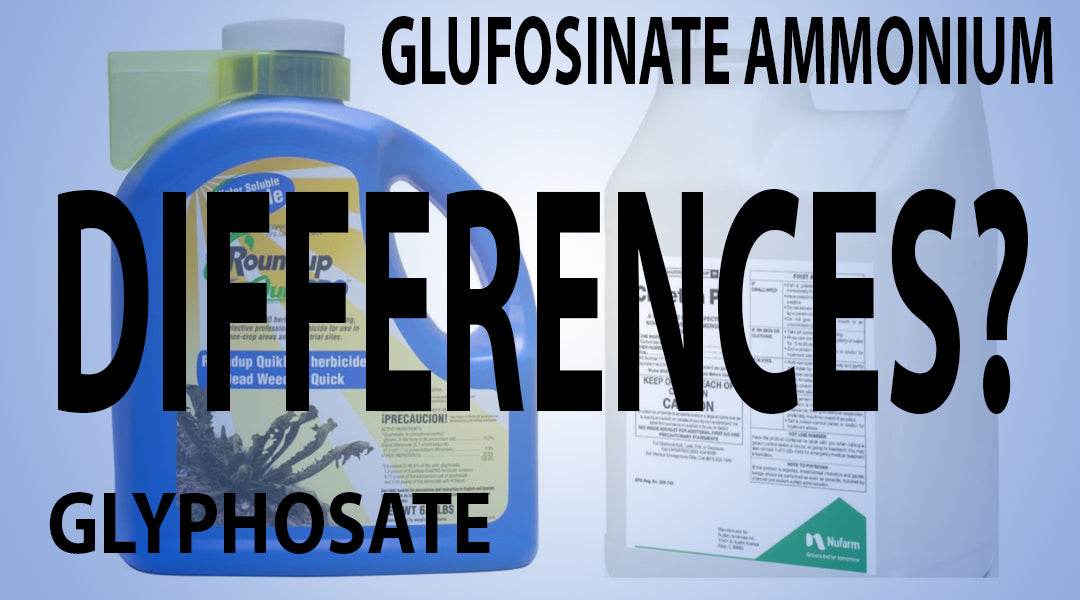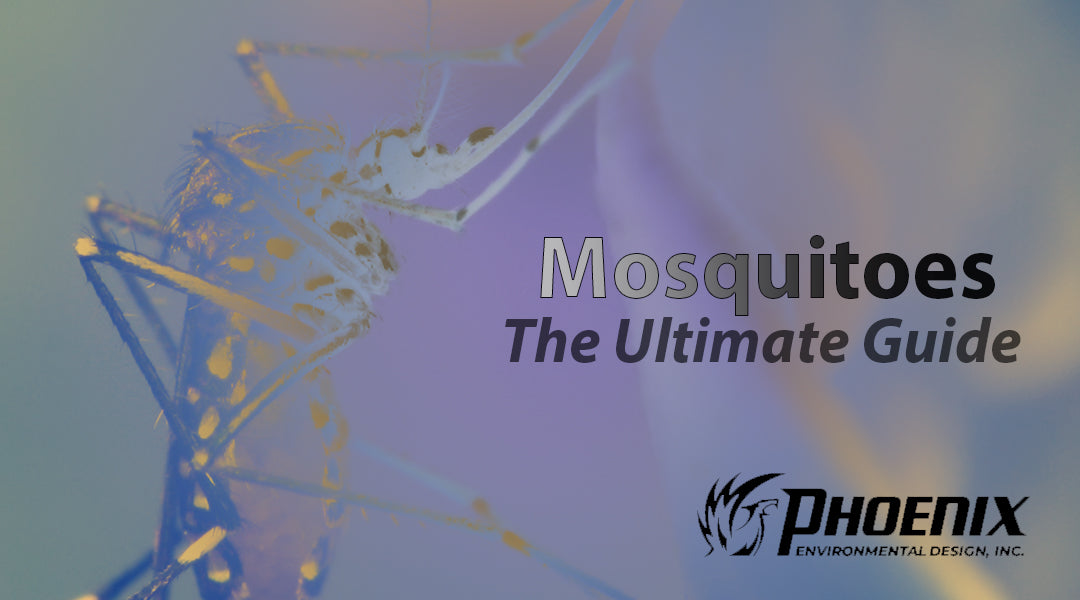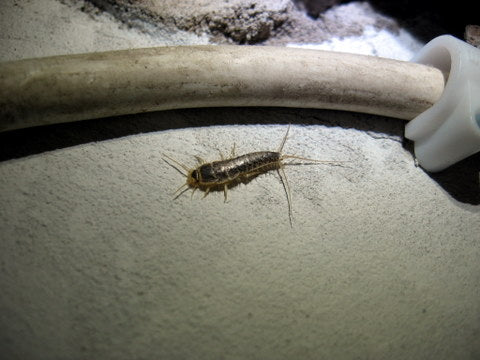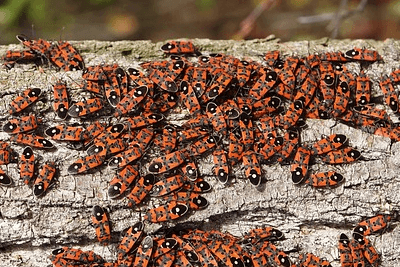
Herbicides, also known as weed killers, are a class of pesticides that play a crucial role in managing undesired plant growth across various industries, including agriculture, landscaping, forestry, and gardening.
Weed overgrowth costs millions of dollars every year, affecting not only these industries but also homeowners who struggle to rid their yards of weeds. Herbicides are classified based on various factors such as mode of action, site of action, chemical families, time of application, selectivity, and translocation.
In this comprehensive guide, we will focus on two widely used herbicides: Glufosinate Ammonium and Glyphosate. We will discuss their properties, differences, similarities, pros and cons, and offer expert advice on their application and best practices.
Part 1: Understanding Herbicides
1.1 Mode of Action
Herbicides can be classified into several categories based on their mode of action, which refers to the process by which a herbicide affects a weed. The five stages of the mode of action are contact, absorption, movement, toxicity, and weed/plant death. Knowledge of a herbicide's mode of action is essential for devising appropriate crop-management strategies, especially in agriculture. Herbicides belonging to a specific group share the same mode of action despite having different chemical families.
1.2 Chemical Families and Herbicide Chemistry Groups
Herbicides are divided into chemistry groups based on their chemical families and mode of action. In this guide, we will focus on two chemicals: Glufosinate Ammonium from Group 10 and Glyphosate from Group 9.
Part 2: Glufosinate Ammonium vs. Glyphosate
2.1 Glyphosate
Glyphosate, an organophosphorus compound from herbicide chemistry Group 9, is a systemic and translocating herbicide. It functions by inhibiting the EPSP synthase pathway, blocking essential amino acids required for photosynthetic processes, and works slowly, taking 7-14 days for visible effects.
Glyphosate is recommended to be mixed with 5-10 gallons of water per acre and sprayed with medium to large-sized droplets when weeds are actively growing. However, it should not be applied during times of intense heat and drought. It is used in greenhouses, nurseries, golf courses, ornamentals (trees, shrubs, and bushes), non-crop areas, and turf.
2.2 Glufosinate Ammonium
Glufosinate Ammonium, a Group 10 herbicide, is also an organophosphorus compound. It is a contact herbicide that inhibits the enzyme glutamine synthetase, kills by inhibiting a plant's ability to utilize nitrogen, and causes ammonia within the plant to become toxic. It works much more quickly than Glyphosate, with results visible within 24-72 hours.
Glufosinate Ammonium should be mixed in 15-20 gallons of water per acre and sprayed with medium to coarse droplets. It should not be applied with LibertyLink and FloodJet nozzles, controlled droplet application equipment, or air-assisted spray equipment. Like Glyphosate, weeds need to be sprayed while actively growing, and application is best during daylight with temperatures at or above 86 degrees Fahrenheit.
Glufosinate Ammonium is used in airfields, airports, alleys, paths and trails, access roads, commercial or industrial structure perimeters, farm outbuildings, ornamental gardens and trees, shrubs, and bare ground.
2.3 Similarities and Differences
Glufosinate Ammonium and Glyphosate have comparable spectra of control but differ in their effectiveness on different types of weeds. Glufosinate Ammonium is more effective on annual broadleaf weeds, while Glyphosate is more effective on annual grasses. Glufosinate is a contact herbicide, whereas Glyphosate is systemic and translocating. Glyphosate is better suited for controlling large weeds, while Glufosinate is better at managing weed growth.
As a non-selective, post-emergent herbicide, Glufosinate Ammonium moves within the treated foliage but does not translocate, making it less effective against perennial weeds (such as bindweed, goldenrod, and bermudagrass) compared to Glyphosate. However, its reduced translocation may be advantageous when used in trim, edges, and landscape beds. Glufosinate Ammonium has little to no potential for root uptake in soil applications.
2.4 Pros and Cons
Glufosinate Ammonium generally does not combat grasses as effectively as Glyphosate, but certain herbicides, such as Cheetah Pro, are formulated to target both broadleaf weeds and grasses. Both chemicals are applied to actively growing weeds, but Glufosinate Ammonium works more quickly than Glyphosate.
Both herbicides are non-selective, but products containing Glufosinate Ammonium, like Cheetah Pro, can target a broader range of weed species than Glyphosate. Both chemicals are considered pet-safe when used as directed. Herbicides that contain Glufosinate Ammonium are usually more expensive, but they are often more effective in controlling glyphosate-resistant weeds.
Part 3: Best Practices for Herbicide Application
3.1 Properly Identify Weed Growth
Identifying the specific weeds you need to control is essential for selecting the appropriate herbicide. Researching each weed's lifecycle will help determine which herbicide will be most effective. Reading and understanding the herbicide label is crucial for successful weed control and avoiding potential harm to surrounding plants.
3.2 Match Herbicide to Management Method
Choose an herbicide that aligns with your preferred weed management approach:
- Pre-emergent weed control: Controls annual grasses and broadleaf weeds when applied in early spring before seed germination.
- Post-emergent weed control: Controls weeds in cool or warm seasons, with the best results achieved when the weeds are young.
3.3 Stay Informed of New Solutions
Don't be afraid to try new herbicides. Older herbicide chemistries may be more affordable, but new products often provide better control. Staying informed about new and improved herbicide technologies can help maintain a solid weed management strategy. Some new herbicide technologies include slow-release granules, micro-encapsulated liquids, quick absorption liquids, and rainfast liquids.
3.4 Optimize Your Equipment
Proper application depends on having the right equipment in good working condition. Sprayers and spreaders should be calibrated correctly for accurate coverage, proper droplet size, and reach. Maintaining constant pressure and flow in spray equipment ensures even herbicide distribution.
For handheld and backpack sprayers, check for corrosion on metal parts, clogged nozzles, and damaged seals. Always rinse your sprayers after use. For spreaders, check that the hopper opens and closes properly and rotates freely.
3.5 Mix Products Correctly
When mixing products, ensure they are compatible and safe. Tank mixing can save time, but without proper precautions, it can be dangerous. Always read the product label carefully to determine the herbicide's compatibility with other herbicides and products.
Part 4: Using Glufosinate Ammonium and Glyphosate for Weed Control
4.1 Application Tips for Glufosinate Ammonium
To use Glufosinate Ammonium effectively, follow these application tips:
- Timing: Apply Glufosinate Ammonium when weeds are actively growing. The herbicide works best during daylight hours with temperatures at or above 86 degrees Fahrenheit.
- Mixing: Mix Glufosinate Ammonium in 15 to 20 gallons of water per acre and spray with medium to coarse droplets.
- Equipment: Do not use LibertyLink and FloodJet nozzles, controlled droplet application equipment, or air-assisted spray equipment.
- Coverage: Ensure complete and uniform coverage of weeds for best results. Glufosinate Ammonium is a contact herbicide, so it's essential to cover the entire weed surface.
- Reapplication: In some cases, you may need to reapply Glufosinate Ammonium to control persistent or resistant weeds.
4.2 Application Tips for Glyphosate
To use Glyphosate effectively, follow these application tips:
- Timing: Apply Glyphosate when weeds are actively growing. Avoid applying during times of intense heat and drought, as it may reduce effectiveness.
- Mixing: Mix Glyphosate with 5 to 10 gallons of water per acre and spray with medium to large-sized droplets.
- Adjuvants: Adding a surfactant or adjuvant can improve Glyphosate's effectiveness by increasing its absorption and spreading on the weed surface.
- Coverage: Ensure thorough coverage of weeds, as Glyphosate is a systemic and translocating herbicide that moves throughout the plant to kill it.
- Reapplication: You may need to reapply Glyphosate for hard-to-control or resistant weeds. Always follow the label instructions for reapplication intervals.
4.3 Integrated Weed Management Strategy
For the best results in weed control, consider implementing an integrated weed management strategy that combines the use of Glufosinate Ammonium and Glyphosate with other methods. This approach includes:
- Cultural practices: Employing proper crop rotation, planting cover crops, and using mulch can help suppress weed growth and reduce the reliance on herbicides.
- Mechanical control: Hand-pulling, hoeing, mowing, and cultivating can be used alongside herbicides to manage weed populations effectively.
- Biological control: Introducing natural predators, such as insects or grazing animals, can help control specific weeds.
- Monitoring: Regularly monitor weed populations and adjust your weed management strategy accordingly.
By integrating various weed control methods with the targeted use of Glufosinate Ammonium and Glyphosate, you can achieve more sustainable and effective weed control in agricultural, landscaping, forestry, and gardening settings.
Part 5: Tips to Prevent Weeds and the Use of Pre-Emergent Herbicides
Preventing weeds is an essential part of an integrated weed management strategy. By minimizing weed growth from the start, you can reduce the need for post-emergent herbicides like Glufosinate Ammonium and Glyphosate. Here are some tips to help prevent weeds:
5.1 Use Pre-Emergent Herbicides
Pre-emergent herbicides are applied before weed seeds germinate and can help prevent weed growth by inhibiting root and shoot development. Some examples of pre-emergent herbicides include pendimethalin, prodiamine, and trifluralin. To use pre-emergent herbicides effectively:
- Timing: Apply pre-emergent herbicides in early spring, before weed seeds begin to germinate. Follow the label instructions for specific application timings.
- Soil Preparation: Properly prepare the soil by removing existing weeds and debris, then lightly rake the area to create a smooth surface.
- Application: Evenly distribute the pre-emergent herbicide according to the label instructions. Be sure to follow the recommended application rate and coverage guidelines.
- Watering: After applying the pre-emergent herbicide, water the area to activate the herbicide and help it penetrate the soil.
5.2 Employ Cultural Practices
Effective cultural practices can help prevent weeds by promoting a healthy and competitive environment for desired plants. Some useful cultural practices include:
- Crop Rotation: Regularly rotating crops can disrupt the life cycle of weeds and reduce their ability to establish and spread.
- Planting Cover Crops: Planting cover crops can help suppress weed growth by competing for resources and blocking sunlight from reaching the soil surface.
- Using Mulch: Applying organic or synthetic mulch can help prevent weed germination by blocking sunlight and creating a physical barrier for weed seeds.
5.3 Mechanical Control Methods
Incorporate mechanical control methods to physically remove or suppress weeds:
- Hand-Pulling: Regularly remove weeds by hand to prevent them from establishing and producing seeds.
- Hoeing: Use a hoe to cut off weeds at the soil surface, disrupting their growth and preventing seed production.
- Mowing: Mow your lawn or field regularly to keep weeds in check and prevent them from producing seeds.
- Cultivating: Regular cultivation can help control weeds by uprooting them and disrupting their growth.
5.4 Monitor and Adjust Your Weed Management Strategy
Regularly monitor weed populations and adjust your weed management strategy accordingly. This includes:
- Scouting: Regularly inspect your fields, gardens, or landscapes to identify and assess weed populations.
- Record Keeping: Keep records of weed infestations, herbicide applications, and other management practices to help identify patterns and inform future decisions.
- Adjusting Practices: If necessary, adjust your weed management practices based on your monitoring and record-keeping efforts to improve weed control effectiveness.
By implementing an integrated weed management strategy that includes the use of pre-emergent herbicides, cultural practices, mechanical control methods, and regular monitoring, you can effectively prevent weeds and reduce the need for post-emergent herbicides like Glufosinate Ammonium and Glyphosate.
Part 6: Cheetah Pro - A Glyphosate Alternative
For professionals looking for a potent herbicide to manage weeds without relying on glyphosate, Cheetah Pro herbicide is the ideal solution. Designed to eliminate the most resilient broadleaf weeds and grasses, Cheetah Pro offers a highly effective non-selective post-emergent herbicide that can be used for site preparation before planting desirable turf and plants.
6.1 How Cheetah Pro Herbicide Works
Cheetah Pro Herbicide contains glufosinate ammonium, an active ingredient that offers rapid results akin to glyphosate but without working systemically. When applied to the target area, Cheetah Pro only affects the plant at the contact point, destroying the weed on contact and quickly eliminating it from the site.
6.2 Where to Use Cheetah Pro
Cheetah Pro can be applied to noncrop sites for efficient weed control. It immediately kills unwanted vegetation for habitat restoration and site preparation. Apply this potent herbicide on mulched areas to keep weeds at bay, as well as on golf courses to maintain them in pristine condition, free of broadleaf weeds and grasses. Use it wherever weeds resist glyphosate-based herbicides, as well as around ornamental gardens, shrubs, and trees. As a post-emergent herbicide, it works only on actively growing weeds. For even better weed control in the target area, consider using a pre-emergent herbicide.
6.3 Target Weeds
Cheetah Pro Herbicide is the ultimate product for weed control, targeting, killing, and controlling more than 190 labeled weeds. It effectively combats the most resistant weeds such as chickweed, yarrow, groundsel, thistle, and mallow. Use it to eliminate ragweed, knotweed, and clover. Cheetah Pro effectively kills poison ivy, woodsorrel, and sandbur, including foxtail, dandelion, and kochia. It targets the most common weeds and eradicates them in less time compared to competing products.
6.4 Benefits of Using Cheetah Pro for Weed Control
The active ingredient in Cheetah Pro Herbicide makes it an extremely effective post-emergent, non-selective product for use on noncrop and commercial sites. It quickly burns down weeds and can even kill and control weeds that are resistant to glyphosate. It's the perfect herbicide for pre-planting and habitat restoration. Some other benefits of Cheetah Pro Herbicide include:
- Labeled for use on golf courses and landscaped areas
- Controls glyphosate-resistant broadleaf weeds
- Targets more than 190 weeds and sedges
- Can be applied as a broadcast, banded, and spot treatment
- Comes in a soluble liquid formula
Cheetah Pro outperforms herbicides containing glyphosate by killing resistant weeds. It effectively burns down everything from pigweed and ragweed to kochia and thistle, making it perfect for use on and around commercial and industrial structures, including airports and roadsides.
Cheetah Pro kills on contact and can be used for repeat treatments to control plants that are emerging from underground parts. Whether it's clover patches on golf courses or undesirable vegetation on pre-construction sites, Cheetah Pro Herbicide kills the weeds on contact.
Conclusion
Understanding the properties, differences, similarities, and best practices for using Glufosinate Ammonium and Glyphosate can help you make informed decisions about weed control. By properly identifying the weeds you need to control, selecting the appropriate herbicide and management method, staying informed about new solutions, optimizing your equipment, and mixing products correctly, you can effectively manage and control weed growth in various settings.
Both Glufosinate Ammonium and Glyphosate are effective herbicides used in a wide range of industries, from agriculture to landscaping and gardening. Each chemical has its advantages and drawbacks, and understanding their properties is essential to making the right choice for your specific weed control needs.
By following best practices for herbicide application and staying informed about new herbicide technologies and products, you can achieve successful weed management while minimizing potential harm to the environment, pets, and other plants. With the right knowledge and tools, you can maintain a healthy, weed-free landscape and contribute to the overall success of your chosen industry.






Leave a comment (all fields required)